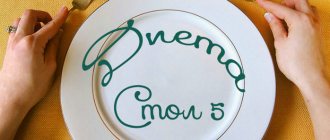“You will be amazed at how easy it is to cure gastritis and ulcers just by taking it every day...
Read more "
Ulcerative pathology is a very dangerous disease that can lead to the development of malignant processes. To exclude the possibility of exacerbations and complications, patients must undergo drug therapy in a timely manner, which will bring the expected results only if they follow a therapeutic diet. This category of patients is recommended to include in their daily diet dietary dishes that are prepared using the following technologies: baking, stewing, boiling and steaming.
Is it possible to have borscht, dumplings, salads, porridges if you have a duodenal ulcer?
Conservative therapy of the digestive system is always accompanied by diet.
When the mucous membrane of the small intestine becomes inflamed, a duodenal ulcer develops, the treatment of which is also closely related to a change in the usual diet. The patient is recommended a therapeutic diet consisting of dishes that are as gentle as possible on the digestive tract. Minimal stress on the intestines and a decrease in the aggressive effects of hydrochloric acid contribute to a faster recovery.
Cooking tips
In addition to properly selected dishes for duodenal ulcers, it is necessary to strictly follow food preparation technology and observe the following rules:
1Due to the presence of defects in the form of ulcers on the walls of the digestive system, the intestines should not be overloaded with fried foods cooked over an open fire. Boiled or steamed recipes are suitable for restoring gastrointestinal functions.
2.Ingredients included in dishes for acute stage duodenal ulcers should be finely chopped, grated or minced. During the period of remission, gastroenterologists allow you to eat food in normal, not mushy form, but chew it for a long time and thoroughly.
3. Soup for duodenal ulcers is cooked in water, secondary meat or vegetable broth, which is obtained after draining the water at the first boil.
It is this base that contains a minimal amount of animal and plant extracts that can increase gastric acidity. 4. Salads for duodenal ulcers during an exacerbation are considered a prohibited dietary dish.
When the disease recedes, it is not recommended to include only salads from fresh vegetables in your food. Plant foods rich in coarse fiber and fiber are too difficult to digest without heat treatment. Mayonnaise and fatty sauces as salad dressings are replaced with olive or vegetable oil and sour cream.
5. Porridges for duodenal ulcers are prepared using large amounts of water.
Thanks to this, the porridges turn out to be boiled, with a viscous consistency, which allows them to envelop the damaged mucous membrane, forming additional protection on the wounds of the small intestine. 6. In general, cooking for duodenal ulcers comes down to well-cooked or steamed food, chopped into small, crumbly pieces. This reduces the load on the diseased organ.
7The diet is divided into six meals, the difference between which is 2-3 hours. Serving size is no more than 300 g; larger volumes can lead to stretching of the small intestine. Dinner should take place a couple of hours before bedtime; it is recommended to drink 250 ml of milk before bedtime.
8.Dishes on the ulcer table are served warm, to avoid thermal irritation of the intestinal walls.
9.During the period of exacerbation of duodenal ulcers, experts prescribe table No. 1a to patients, and when the disease subsides - 1b.
Food that is harmful
What foods should a person with ulcers never eat? At the top of the list are fried, fatty, spicy and rough foods. Oddly enough, this definition includes not only your favorite fried potatoes, golden chops or fiery seasonings. Red meat, even cooked without frying, is also fraught with danger. Animal protein increases acidity in the stomach, and its coarse fibers can further damage the mucous membrane. You will also have to say goodbye to offal, sausages, smoked meats, frankfurters and other semi-finished products.
Raw vegetables are strictly contraindicated. For all its usefulness, hard fiber can cause harm to already vulnerable mucous membranes. Fried vegetables are also harmful for ulcers. The best solution would be a mild steam heat treatment. Fruits and berries must undergo strict selection. Oranges, lemons, grapefruits, pineapples, kiwis, grapes, sour berries, as well as natural juices containing them are excluded from the diet without delay. As, indeed, high-calorie sweets: cookies, chocolate, sweets and cakes, replete with trans fats. The same fate should befall nuts, seeds and chips, the rough texture of which promises nothing but suffering for the stomach. Tea and especially coffee are strictly prohibited because they have an irritating effect.
Dumplings for duodenal ulcer
Most patients who cannot imagine their life without meat ask specialists: “Can I afford dumplings if I have a duodenal ulcer?”
The answer to the question depends on the stage of the disease, the period of illness and the composition of the dish.
Eating dumplings during an exacerbation is strictly prohibited, as this can provoke perforation of the ulcer. Store-bought convenience foods are especially difficult to digest. Prepared with a large amount of pepper and fatty meats, they will disrupt digestion and cause pain.
During stable remission, once every 2 weeks it is allowed to replace one meat dish with dumplings prepared at home. In this case, do not use pepper and give preference to low-fat minced meat, such as chicken.
Borscht and duodenal ulcer are incompatible
If you have an ulcer, this favorite first dish is prohibited.
Prepared with tomato paste, garlic and overcooked vegetables, it poses a huge danger to the intestinal mucosa. As an alternative to borscht, gastroenterologists offer vegetable soups that are not inferior in taste to the Ukrainian recipe.
- Zucchini;
- Milk - a quarter glass;
- Water - glass;
- Butter (butter), flour - one small spoon;
- Egg;
- Salt;
- Cabbage (cauliflower) – small head;
1. Scald the cabbage and disassemble. Finely chop the zucchini. Place everything in a saucepan, add water and oil, cover with a lid, and simmer.
2.Dry the flour in a frying pan, dilute it with water, cook for 10 minutes.
3. Wipe the vegetables, add flour broth, milk, heat for a couple of minutes, add salt.
Dessert
Sweets are not prohibited for ulcer sufferers. Of course, we are not talking about chocolate and cream cakes, but you can eat baked apples, light biscuits, fruit mousses and jellies. A little sugar will not harm the body and will even help cope with stress.
Currant jelly
Dissolve 1 teaspoon of gelatin in cold water. Separately, combine 5 tablespoons of water and 2 teaspoons of sugar, boil and add 2.5 tablespoons of currant juice. Pour gelatin into the mixture and mix well. Pour the jelly into molds and leave to harden.
Gelatin is very actively used in medicinal cooking, since it does not provoke increased secretion of gastric juice.
General characteristics of the diet
Therapeutic diet No. 1 is indicated:
- at the stage of recovery after a sharp exacerbation of gastric and duodenal ulcers and during the period of mild exacerbation;
- during a period of mild exacerbation of chronic gastritis in case of maintaining or increasing secretion;
- at the stage of recovery after acute gastritis.
Goals of therapeutic diet No. 1:
- chemical, mechanical and thermal sparing of the gastrointestinal tract in the case of adequate nutrition;
- reduction of inflammation;
- facilitating the healing of ulcers;
- normalization of secretory and motor gastric functions.
Therapeutic diet No. 1 is physiologically complete in terms of energy value and the amount of fats, proteins, and carbohydrates. Her diet contains a limited amount of foods that stimulate strong gastric secretion, irritate the gastric mucosa, linger in it for a long time and are difficult to digest. As a rule, food is consumed mashed, boiled or steamed. Some dishes can be baked, but without forming a crust. Fish and not very coarse meats are served in pieces. Salt is limited. Hot and cold are prohibited. A glass of milk or cream is recommended at night. Meals 5-6 times a day.
Chemical composition of diet No. 1:
- 90-100 g of proteins, 60% of which are of animal origin;
- 100 g of fats, 30% of which are of vegetable origin;
- 400-420 g carbohydrates;
- 10-12 g table salt;
- 1.5 liters of liquid.
The calorie content of therapeutic diet No. 1 is 2800-3000 calories.
Cosmo recommends
Rich girl styling: hairstyle ideas that will make your look more expensive
Leave black in the past - 7 bright sweaters you need in spring 2020
During treatment indicated for diseases of the digestive system, a properly formulated diet plays a major role. Depending on the disease you are faced with, you need to know how to properly follow a diet for gastritis, stomach or duodenal ulcers.
Diet for stomach ulcers
The main goal of the diet is to speed up the healing of ulcers. This is a difficult and long process that requires patience and careful diet planning. Fasting is absolutely contraindicated, because this will lead to an even more aggressive effect of acid on the walls of the stomach. You should eat often - 5-8 times a day to prevent hunger. Food should not be too hot or cold. As a diet for exacerbation of stomach ulcers, gastroenterologists prescribe table No. 1 according to Pevzner.
Diet for duodenal ulcers
Duodenal ulcer also requires a gentle diet. The diet for exacerbation of duodenal ulcer coincides with the menu prescribed for the treatment of stomach ulcers (table No. 1).
Dietary requirements include drinking milk to reduce stomach acidity. All food should be thermally processed and at a warm, comfortable temperature. It is recommended to eat foods high in B vitamins, which help restore the mucous membrane (for example, cereals).
Diet for gastritis
Gastritis is an unpleasant, but unfortunately common companion of modern man. If this disease is left unattended, it threatens to develop into a stomach ulcer. The diet for gastritis and stomach ulcers is based on the same principles. Table No. 1 helps relieve symptoms during exacerbation of chronic gastritis.
If you are faced with acute gastritis, which is a separate disease, on the first day it is recommended to give your stomach a rest and refuse to eat. But it is necessary to observe the dietary regime. You can drink water, sweet weak tea, rosehip infusion. The drink should be warm. As soon as your condition has improved somewhat and you have an appetite, introduce gentle food into your diet that will not irritate the gastric mucosa. Food is prepared boiled or steamed and should be served pureed, unsalted and without seasonings.
Menu options
Option #1
Breakfast: steam omelette, herbal tea
Snack: baked apple
Lunch: cauliflower soup with croutons, fish cakes and mashed potatoes.
Afternoon snack: cottage cheese cake
Dinner: vegetable puree and boiled chicken breast, boiled beet salad with prunes
Option No. 2
Breakfast: lazy dumplings with low-fat sour cream and strawberry syrup, weak tea
Snack: a bunch of white grapes
Lunch: white bean, carrot and spinach soup, baked beef with pumpkin slices, jelly
Afternoon snack: semolina casserole with pear
Dinner: rice zrazy with chopped lean beef, stewed zucchini
Option #3
Breakfast: semolina porridge with milk with berry jam, weak tea
Snack: banana and peach
Lunch: milk soup with baked pumpkin, buckwheat porridge with stewed carrots and steamed meatballs
Afternoon snack: baked apple
Dinner: vermicelli casserole with cottage cheese
Recipes for stomach ulcers
Gastroenterologists recommend that patients take boiled or stewed dishes, as well as casseroles or steamed food as the basis of their diet.
To ensure rapid scarring of ulcerative defects, a therapeutic diet should be followed for at least 12 months.
But there are a lot of delicious dishes that are also safe for peptic ulcers. You can prepare a lot of delicious dishes by steaming or using water, and they will also help overcome peptic ulcers. Such dishes are prepared from the simplest ingredients and the most banal processing methods.
In general, recipes for ulcers must meet the following requirements:
- It is necessary to exclude spices and herbs, salt, it is better to enhance the taste of dishes with herbs or sour cream, lemon juice, turmeric, soy sauce, etc.;
- When baking, it is forbidden to bring dishes until a golden crust forms; it is prohibited for ulcer sufferers, as are fried foods;
- Dietary meat should be without veins and fat;
- It is better to use refined vegetable oil; butter is ok, but only unsalted;
- You need to take the diet more calmly, you should not perceive it as the strictest restriction, the calorie content of foods per day should correspond to the generally accepted norm (1500-2500 kcal);
- Diet therapy involves preparing dishes by boiling, stewing or steaming; baking is allowed, but rarely and in the absence of contraindications;
- Berries or fruits, vegetables must be peeled and ground before consumption, only then can the ulcer sufferer eat such a product;
- Pasta or porridge must be thoroughly boiled to obtain a soft product. In the case of an ulcer, it is always better to overcook than undercook. Food should be soft and easily passable through the esophageal canal, and it should not irritate the intestines.
Ulcer sufferers should perceive such dietary therapeutic requirements not as a temporary obligation, but as a way of life.
Every day, the ulcer menu should include 4-5 full meals, and they should contain first and second courses. Particular attention is paid to first courses, i.e. soups, which have an enveloping effect and facilitate digestion.
For peptic ulcers, soups can be prepared from vegetable broths, as well as from decoctions of poultry, lean veal, and lean fish.
Chicken
Chicken broth has incredible benefits for many pathological conditions, especially gastrointestinal pathologies.
The extractive substances of this product normalize gastrointestinal activity. This broth neutralizes excess hydrochloric acid present in gastric secretions, which plays an important role in peptic ulcers. And chicken meat is the leader in the content of protein components among all varieties, surpassing veal and pork.
Properly prepared chicken broth contains a huge amount of B vitamins, copper, iron and calcium, which are so necessary for the body weakened by peptic ulcer disease. The most healing is considered broth made from chickens from our own backyard, which grow on their own, without additives for growth.
To properly prepare chicken broth you need:
- Take a chicken breast (0.6 kg), preferably homemade, remove the skin from it and put it in a saucepan;
- Pour water (2 l) into the washed meat;
- Place the container on medium-intensity gas and bring to a boil;
- When the liquid boils, you need to reduce the gas to a minimum, remove the foam and simmer the broth under the lid for half an hour;
- While the broth is boiling, you need to cut one carrot into cubes, peel the onion, peel the roots of parsley and celery, chop a clove of garlic;
- After half an hour, add the prepared vegetables to the broth and boil it for another 20 minutes;
- Remove the saucepan from the heat and keep covered for another quarter of an hour.
The prepared broth can be eaten by ulcer patients only when it has cooled to 40-50 degrees, adding a little dill to it.
Pea
Consumption of pea soup for ulcerative pathology is undesirable. Although peas are rich in protein components and vitamins, their consumption negatively affects the digestive processes. Legumes are contraindicated for ulcers because they cause flatulence and fermentation in the gastric region.
Vegetable
To prepare dietary soup, you can use pumpkin, potatoes, carrots, zucchini, etc.
Zucchini soup can be prepared:
- ½ zucchini, peeled and chopped;
- Add grated carrots and potatoes
- Blanch the mixture for several minutes, then grind and mix with water;
- Add flour and salt gradually, boil;
- Season the finished soup with dill.
Authorized products
- Broths (decoctions). To prepare first courses, it is recommended to use decoctions of potatoes and other vegetables, combining them with pureed cereals, vegetables or meat boiled and crushed to a puree consistency. You can eat milk soups. For seasoning soups, a mixture of raw eggs with milk and butter, either vegetable or butter, is suitable.
- Meat and fish dishes. Dietary food should be complete and contain a sufficient amount of meat and fish products. Meat should be served twice a day. After the exacerbation of the disease has ended, you can not grind the food, but gradually introduce carefully cooked finely chopped foods into the menu. And diversify your diet with meat pate with the addition of liver, milk sausages, and lightly salted low-fat herring.
- Meat products. Allowed: beef, chicken and turkey, rabbit, lamb, lean pork. First, you need to remove all fat, coarse veins and tendons from the meat. Boil the meat, chop it, you can add it to first courses and porridges or cook it: aspic or puree, varieties of steamed cutlets - meatballs, quenelles and zrazy, even delicious beef stroganoff.
- Low-fat fish is suitable, the cooking method should correspond to the first table, sometimes it is acceptable to serve baked fish. You can cook fish whole or from chopped different types of steamed cutlets.
- Cereals. The basis of soups and main courses are heavily boiled and then pureed cereals. Allowed cereals: oatmeal, buckwheat, rice, semolina, thin vermicelli and noodles.
- Vegetables. The diet includes: carrots, cauliflower, potatoes, young peas, beets. Serve as a separate dish or add as a component to other products. Add oil if desired.
- Pumpkin and zucchini do not need to be wiped.
- You can eat bread. But it should be baked the day before and have time to dry slightly. You can have crackers, dry biscuits, cookies. Sometimes it is possible to cook pies from simple dough in the oven, filled with fruits, meat, and fish.
- Dairy products: cottage cheese, kefir, sour milk, milk, cream are allowed. Once every few days you can eat mild cheese, and sour cream is recommended as an addition to main dishes.
- Eggs. Can be eaten as an omelet or soft-boiled. It is permissible to consume no more than 2 eggs per week.
- Dessert. Berry and fruit desserts should be baked or slightly boiled and pureed. Only sweet varieties are used, which can be used in the preparation of drinks or purees, jelly.
- Jelly made with milk, non-acidic preserves and jams, marshmallows, marshmallows, and honey are well absorbed.
- Beverages. We recommend a vitamin decoction containing rose hips, weakly brewed teas, weak coffee, which can be diluted with milk or cream.
Salads
Vegetables are considered the main source of nutrition, vitamins and fiber. It is better to stew or boil vegetables, make casseroles or steam them, you can make salads from them.
- Beet salad. Raw root vegetables (200 g), green peas, vegetable oil (10 g). All components are mixed. It is better to eat this salad between main meals. The beets are boiled, cooled, grated, sprinkled with peas, and seasoned with vegetable oil.
- Rice and turkey. The poultry fillet is cut into strips; additionally, you need to boil long-grain rice. Then a fresh cucumber is grated on a coarse grater and quail eggs are added. The last stage of preparation is to cook the rice, all ingredients are mixed with sour cream, fresh cucumber and eggs.
Diet therapy is not always associated with disgusting dishes; we can create a completely adequate diet on our own by including tasty and healthy foods.
Although an ulcer implies a lot of restrictions, you can eat fish and lean meat, vegetables, a variety of cereals and soups, and desserts. With strict adherence to a therapeutic diet, you can forget about stomach problems for a long time.
Omelette
Mix 1 egg, 1 teaspoon of sour cream, the same amount of flour, salt. You should get a batter with a consistency similar to sour cream. Pour it into a greased mold and cook in a water bath.
Eggs help relieve pain and inflammation. They can be soft-boiled, used to season soups, and even eaten raw. Both chicken and quail eggs are useful.










